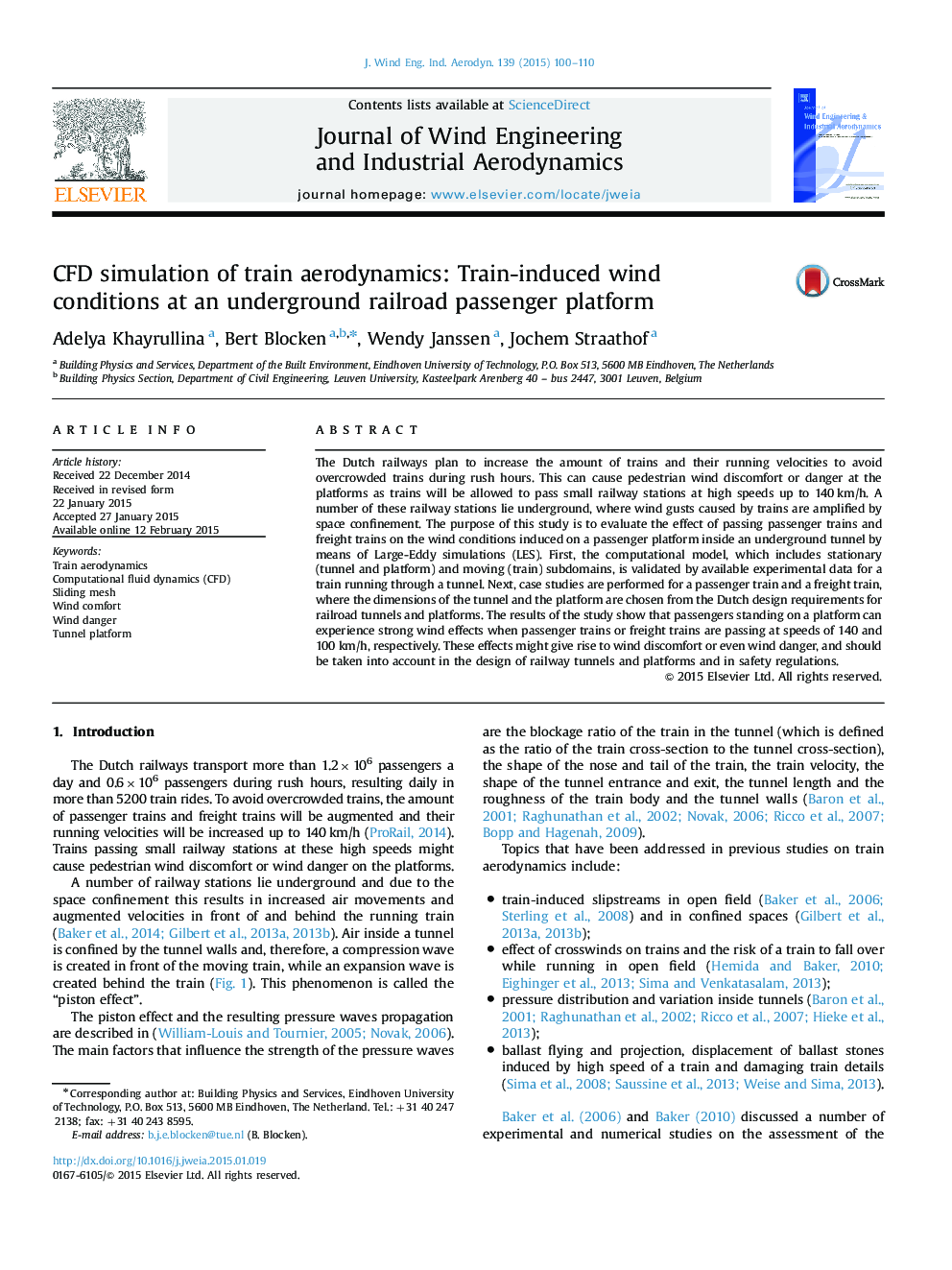| Article ID | Journal | Published Year | Pages | File Type |
|---|---|---|---|---|
| 293422 | Journal of Wind Engineering and Industrial Aerodynamics | 2015 | 11 Pages |
The Dutch railways plan to increase the amount of trains and their running velocities to avoid overcrowded trains during rush hours. This can cause pedestrian wind discomfort or danger at the platforms as trains will be allowed to pass small railway stations at high speeds up to 140 km/h. A number of these railway stations lie underground, where wind gusts caused by trains are amplified by space confinement. The purpose of this study is to evaluate the effect of passing passenger trains and freight trains on the wind conditions induced on a passenger platform inside an underground tunnel by means of Large-Eddy simulations (LES). First, the computational model, which includes stationary (tunnel and platform) and moving (train) subdomains, is validated by available experimental data for a train running through a tunnel. Next, case studies are performed for a passenger train and a freight train, where the dimensions of the tunnel and the platform are chosen from the Dutch design requirements for railroad tunnels and platforms. The results of the study show that passengers standing on a platform can experience strong wind effects when passenger trains or freight trains are passing at speeds of 140 and 100 km/h, respectively. These effects might give rise to wind discomfort or even wind danger, and should be taken into account in the design of railway tunnels and platforms and in safety regulations.
Graphical abstractFigure optionsDownload full-size imageDownload as PowerPoint slide
